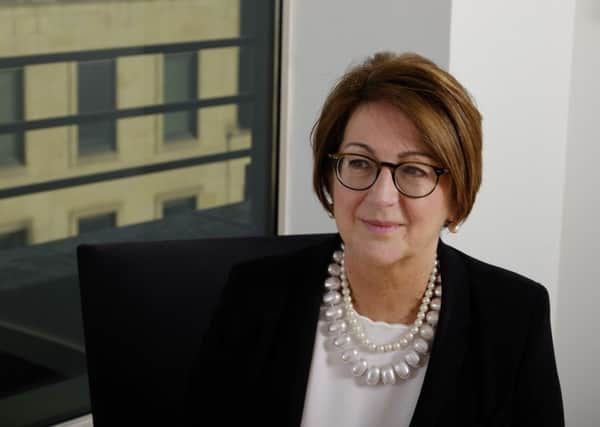Finding the gender balance in Scotland’s legal sector


It’s hard to believe that it was only 100 years ago that the UK’s first female lawyer was legally permitted to practise the profession in Britain.
After the Sex Disqualification (Removal) Act 1919 was passed, Glasgow-born Madge Easton Anderson became the first woman to graduate from the University of Glasgow with a law degree the following year, and became the country’s first female lawyer.
Advertisement
Hide AdAdvertisement
Hide AdShe also became a partner at the UK’s only female-run law practice, which was based in London.
But the beginning of Anderson’s career certainly had its hiccups, as her application to qualify as a solicitor was initially refused on the basis that her three-year training commenced before the Act was passed.
However, a petition to the Court of Session saw Lord Ordinary Lord Ashmore maintain that if it was a man who had found himself in her position he would no doubt be admitted into the profession.
Anderson was therefore accredited as a solicitor by the Law Society of Scotland. A century on and Ashmore’s views are echoed throughout the industry, and more than 51 per cent of solicitors are indeed women.
Additionally, at the end of last year, a report by the Law Society of Scotland found that 80 per cent of all Scottish solicitors and paralegals believe that gender equality in the profession has improved over the last five years.
But many experts believe there is room for improvement when it comes to career progression and breaking the barriers to becoming a partner.
“While it is wonderful that more women work in the legal profession, the reality is that most women are still [their family’s] primary carers, something that the Law Society of Scotland’s recent profile of the profession survey confirmed,” explains Valerie Dougan, a professional support lawyer at CMS.
“Being a partner in a big law firm is a hugely demanding role and many women in particular don’t want those demands and so choose not to put themselves forward.”
Advertisement
Hide AdAdvertisement
Hide AdShe adds: “Some of my colleagues think that’s simply personal choice, but I think it’s more than that – we need to rethink the way we work, not only in relation to more flexible working at senior levels,
but also how we meet the demands of our clients.”
CMS has signed up to the Barclay’s Mindful Business Charter to encourage discussion between in-house and private-practice solicitors concerning the working conditions of lawyers as part of efforts to move away from the “breadwinner model” of business.
And change seems to be happening in regard to the balance between career and family responsibilities.
Yvonne Brady, head of diversity, development and inclusion at Shepherd and Wedderburn, which has recently introduced a mentoring programme between senior associates and partners to tackle diversity issues, notes: “We have made a number of improvements to help redress the balance, these include agile and flexible working, supported by the latest technology, and encouraging more male colleagues to take parental leave.”
Brady highlights the issue of women in board positions and managing parent roles, saying: “These role models are important for women in the profession to see what they can achieve.
“There is, however, still a disproportionate number of men in those roles and so the profession has quite a long way to go.”
In April this year, it was reported that almost eight in ten of UK companies still pay male employees more than their female counterparts, with one-quarter of businesses and public sector bodies admitting that they had a pay gap of more than 20 per cent in favour of men.
However, the dynamic changes brought about by the climate of awareness in the wake of the MeToo movement, and the impacts of the International Bar Association’s report on bullying, are to be welcomed, believes Dougan of CMS.
Advertisement
Hide AdAdvertisement
Hide AdShe says: “While people may criticise the limitations of the gender pay gap reporting regime, what it has done is expose that there is a missing 20 per cent of women in our partnership positions, which has really pushed this issue up the agenda, as people are asking why that is.
“Many firms did not report partner earnings in the first year of reporting, but this year they did. That’s progress.”
Brady adds: “We should be engaging younger people in the profession as to what their hopes, fears and aspirations actually are because if we can get a positive working experience – not just for women – everybody gets more out of the profession.”
This article first appeared in The Scotsman’s Scottish Legal Review 2019 magazine. A digital version can be found here.